
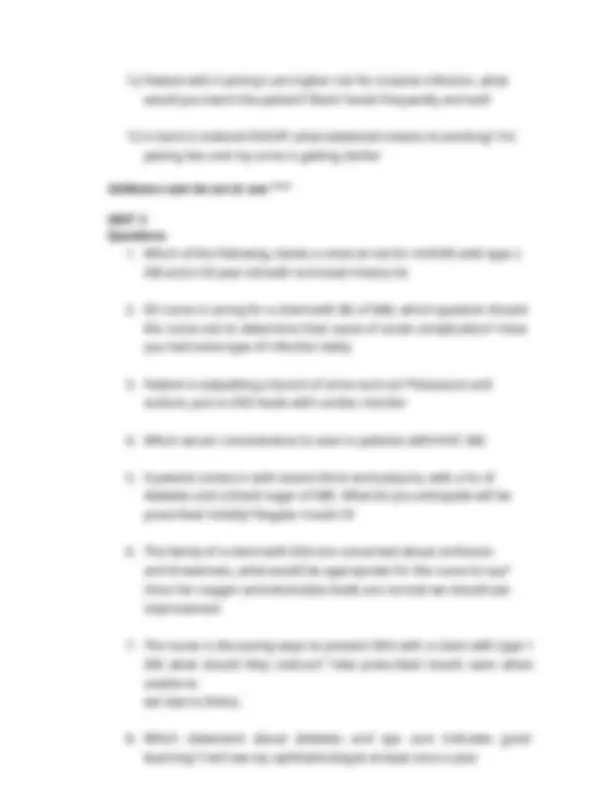
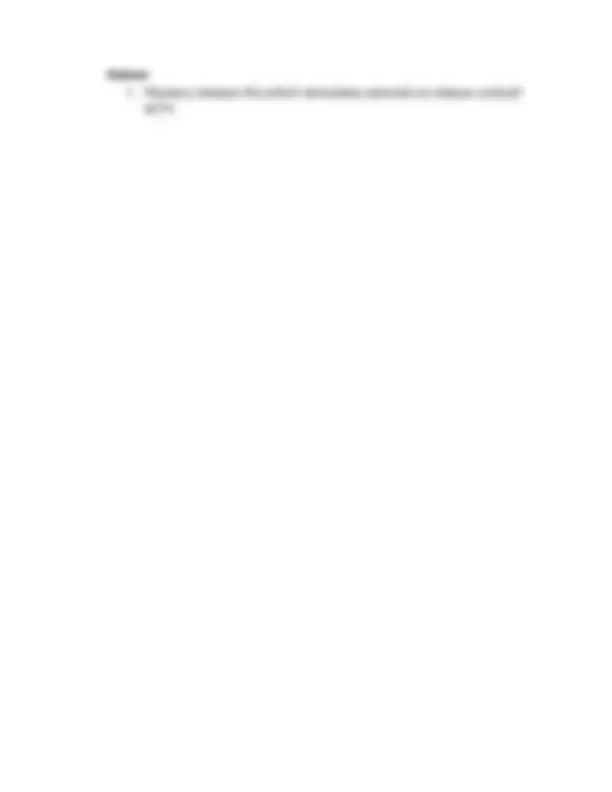
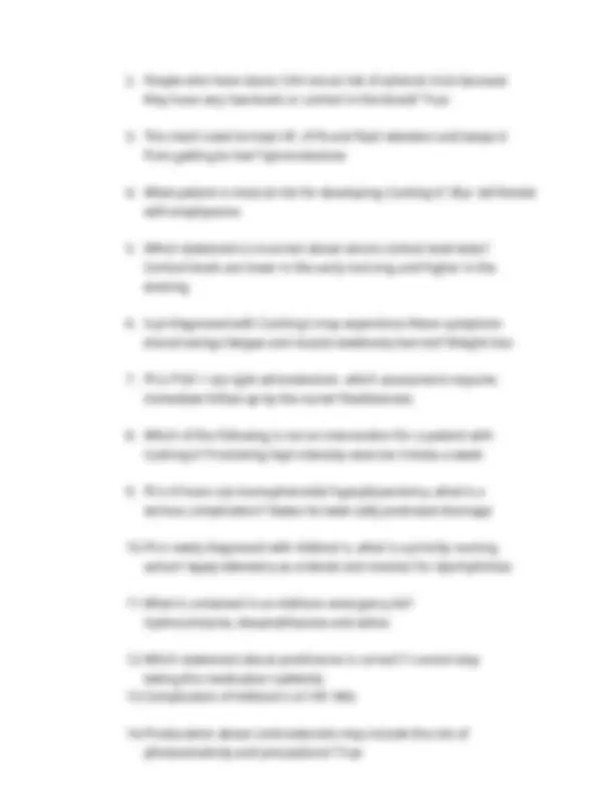
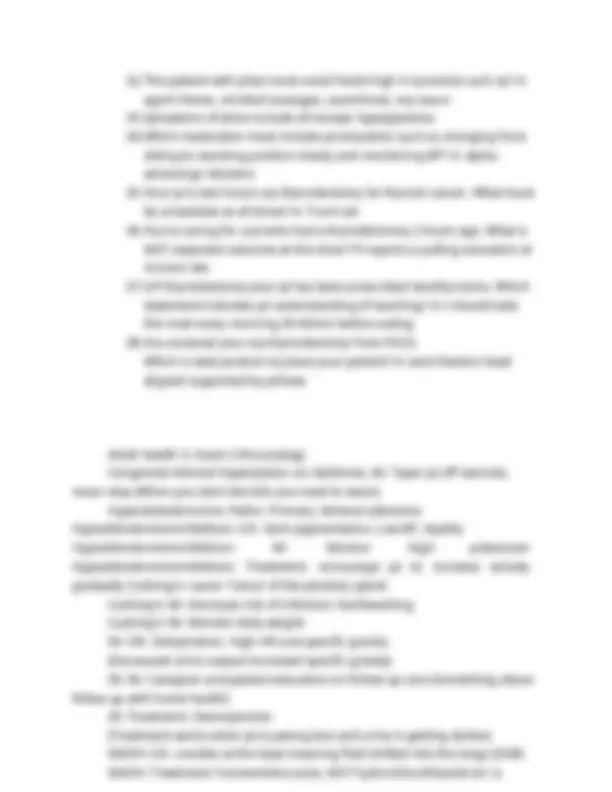
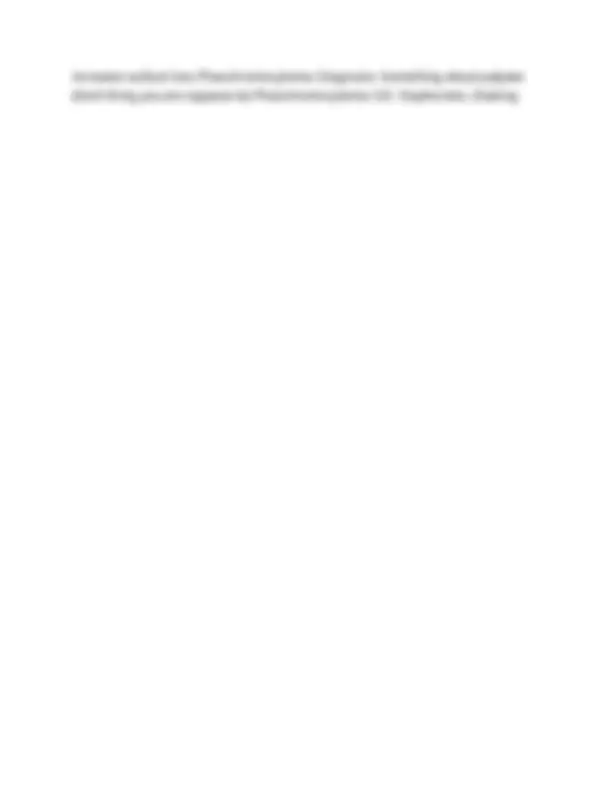
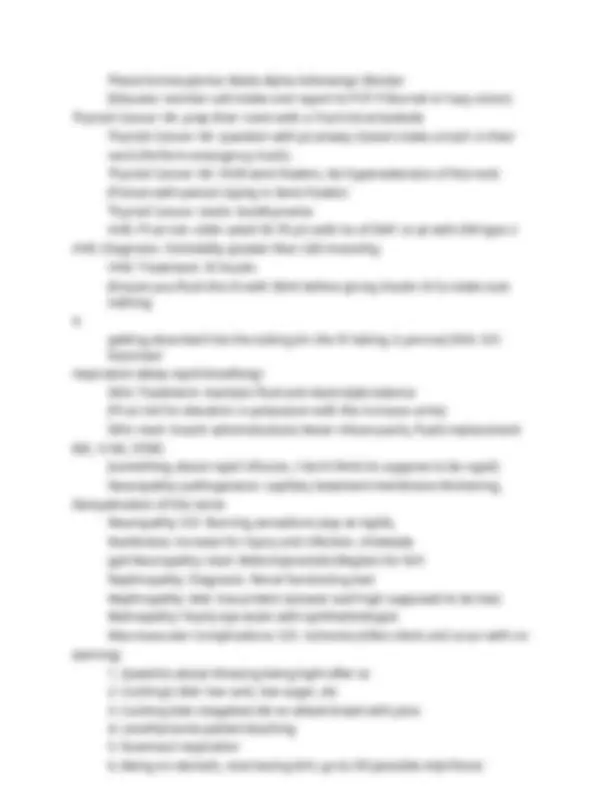


Study with the several resources on Docsity

Earn points by helping other students or get them with a premium plan


Prepare for your exams
Study with the several resources on Docsity

Earn points to download
Earn points by helping other students or get them with a premium plan
Community
Ask the community for help and clear up your study doubts
Discover the best universities in your country according to Docsity users
Free resources
Download our free guides on studying techniques, anxiety management strategies, and thesis advice from Docsity tutors
1. Your patient has been diagnosed with pheochromocytoma. Which of the following is NOT a priority assessments? Heartburn. (Priority: HTN, hypermetabolism, and hyperhidrosis) 2. Which of the following is an inappropriate education statement about diet for the patient with pheochromocytoma? "Avoid foods high in tyramine such as..." vegetables (high doses of tyramine are found in canned foods) 3. Which medication must include pt. education such as changing from a sitting to standing position slowly, monitoring salt intake and reporting blurred or hazy vision? Alpha-adrenergic blockers 4. A patient presents with muscle weakness, dark skin, mucous membrane pigmentation and emotional liability these are CM of? Hypoaldosteronism 5. What med does not cause photosensitivity?Levothyroxine
Typology: Quizzes
1 / 13

This page cannot be seen from the preview
Don't miss anything!








Questions
prevents your body from absorbing to much salt and keep potassium from getting low?Spironolactone (nursing care) 11.Pt diagnosed with Cushing will experience symptoms except weight loss
Kahoot
extrem. 28.Which is an inappropriate assessment for a pt diagnosed with pheochromocytoma? A: reflexes ****limit visitors for pheo and make them rest 29.Your patient has been diagnosed with pheo. Which is NOT a manifestation? A: hypometabolism 30.Why would a morning cortisol test be appropriate for a pt Dx with pheo? A: not an appropriate test 31.There is a high incidence of pheo in family members of affected people? A: true
32.The patient with pheo must avoid foods high in tyramine such as? A: aged cheese, smoked sausages, sauerkraut, soy sauce 33.Symptoms of pheo include all except: hypoglycemia 34.Which medication must include pt education such as changing from sitting to standing position slowly and monitoring BP? A: alpha- adrenergic blockers 35.Your pt is two hours s/p thyroidectomy for thyroid cancer. What must be at bedside at all times? A: Trach set 36.You're caring for a pt who had a thyroidectomy 2 hours ago. What is NOT expected outcome at this time? Pt reports a pulling sensation at incision site 37.S/P thyroidectomy your pt has been prescribed levothyroxine. Which statement indicates pt understanding of teaching? A: I should take this med every morning 30-60min before eating 38.You received your s/p thyroidectomy from PACU. Which is best position to place your patient? A: semi-fowlers head aligned supported by pillows Adult Health 3- Exam 2 (focus/plug) Congenital Adrenal Hyperplasia: s/s: Baldness, NI- Taper pt off steroids, never stop (When you start steroids you need to wean) Hyperaldosteronism: Patho- Primary: Adrenal adenoma Hypoaldosteronism/Addison: S/S- Dark pigmentation, Low BP, Apathy Hypoaldosteronism/Addison: NI- Monitor High potassium Hypoaldosteronism/Addison: Treatment- encourage pt to increase activity gradually Cushing’s: cause- Tumor of the pituitary gland Cushing’s: NI- Decrease risk of infection: handwashing Cushing’s: NI- Monitor daily weight DI: CM- Dehydration, High HR Low specific gravity (Decreased urine output increased specific gravity) DI: NI- Caregiver and patient education on follow up care (Something about follow up with home health) DI: Treatment- Desmopressin (Treatment works when pt is peeing less and urine is getting darker) SIADH: S/S- crackles at the base meaning fluid shifted into the lungs (SOB) SIADH: Treatment: Furosemide (Lasix), NOT hydrochlorothiazide b/c is
Pheochromocytoma: Meds-Alpha Adrenergic Blocker (Educate: monitor salt intake and report to PCP if blurred or hazy vision) Thyroid Cancer: NI- prep their room with a Trach kit at bedside Thyroid Cancer: NI- question with pt airway closed-create a trach in their neck (Perform emergency trach) Thyroid Cancer: NI- HOB semi-fowlers, No hyperextension of the neck (Picture with person laying in Semi-Fowler) Thyroid Cancer: meds- levothyroxine HHS: Pt at risk- older adult 50-70 yrs with hx of DM1 or pt with DM type 2 HHS: Diagnosis- Osmolality greater than 320 mosm/kg HHS: Treatment- IV Insulin (Ensure you flush the IV with 50ml before giving Insulin IV to make sure nothing is getting absorbed into the tubing b/c the IV tubing is porous) DKA: S/S- Kussmaul respiration (deep rapid breathing) DKA: Treatment- maintain fluid and electrolyte balance (Pt at risk for elevation in potassium with the increase urine) DKA: med- Insulin administration( Never infuse quick), fluids replacement (NS, 1⁄2 NS, D5W) (something about rapid infusion, I don’t think its suppose to be rapid) Neuropathy: pathogenesis- capillary basement membrane thickening, Demyelination of the nerve Neuropathy: S/S- Burning sensations (esp at night), Numbness: increase for injury and infection, Unsteady gait Neuropathy: med- Metoclopramide (Reglan) for N/V Nephropathy: Diagnosis- Renal functioning test Nephropathy: diet- low protein (answer said high supposed to be low) Retinopathy: Yearly eye exam with ophthalmologist Macrovascular Complications: S/S- ischemia (often silent and occur with no warning)
crisis) 7. patient with DI, what would report immediately